#1 Visit a Morning Market
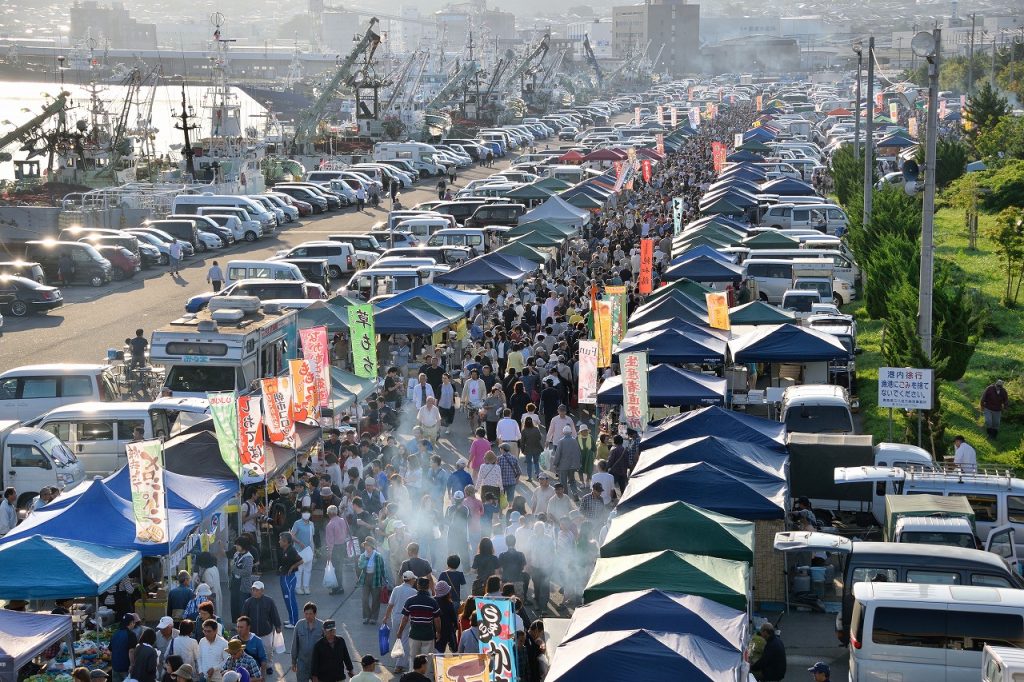
#2 Walk, Bike, or Drive the Tanesashi Coast
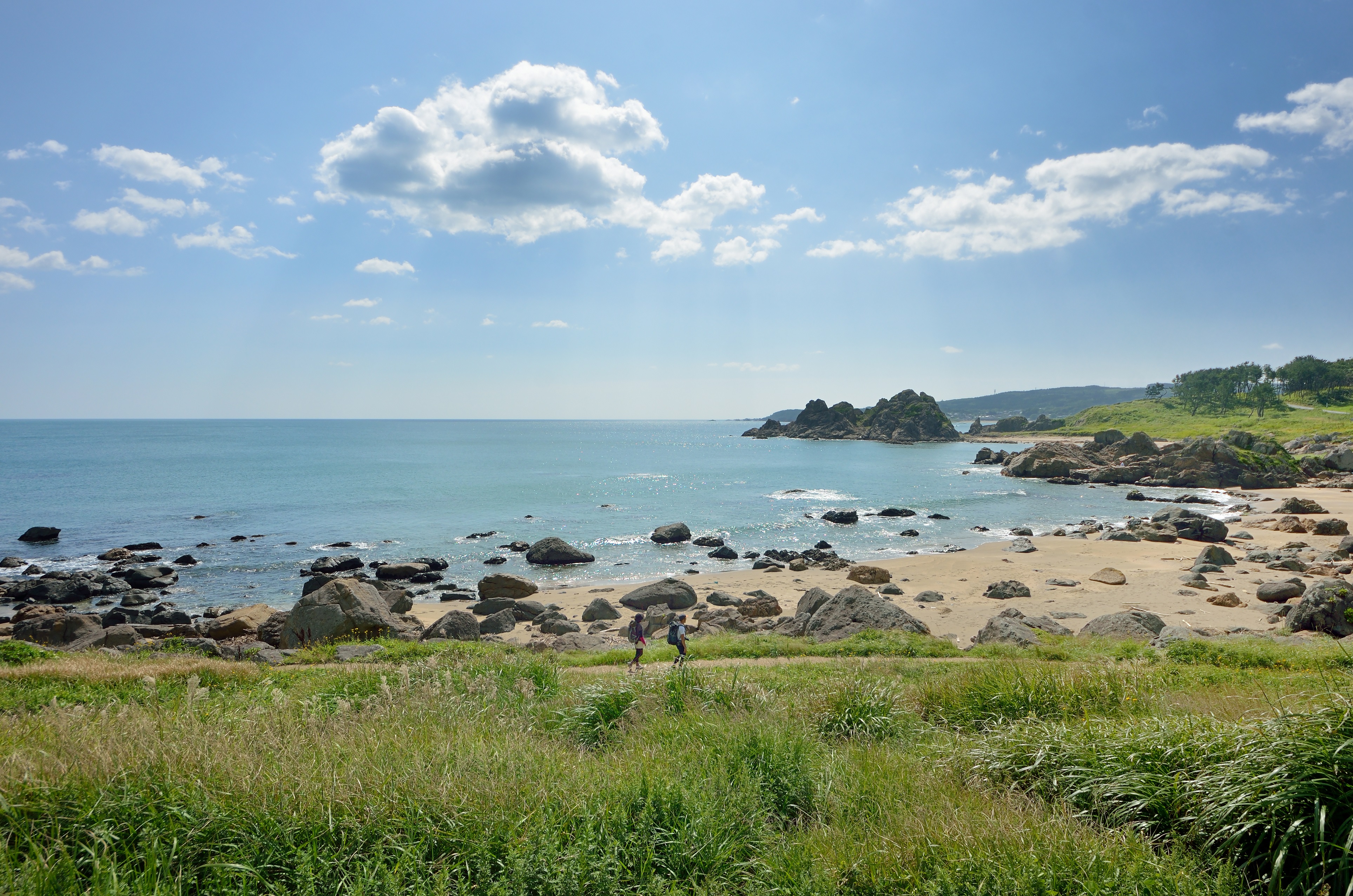
The Tanesashi Coast is the portion of the coastline in Hachinohe that starts at the Kabushima Shrine and runs down to the neighboring town of Hashikami. It is part of the Sanriku Fukko National Park and its dynamic views, changing from soft sandy beaches to craggily dramatic cliffs to sprawling wildflower fields, make it an absolute must-see when in the area. The coast is great for driving and biking, but to truly see ALL that the coast has to offer, we recommend walking it. Start at Kabushima and follow the Michinoku Shiokaze Trail, a 1000km trail that runs the whole length of the national park, until you reach the Tanesashi Natural Lawn.
#3 Explore the Hachinohe Portal Museum hacchi
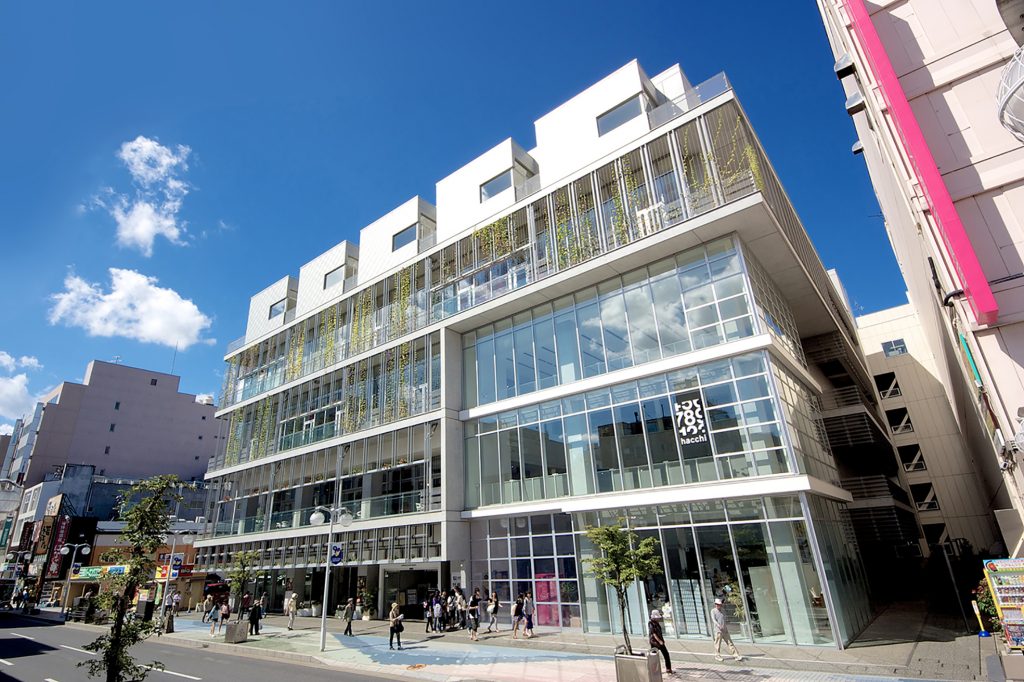
This facility is #3 on our list for many reasons. First, it contains exhibits, information, and displays that cover almost everything there is to know about the Hachinohe area. It is a great place to come for first-time visitors looking to get a quick glimpse into what makes Hachinohe the city it is.
Second, the decorations of the facility are almost all handmade and inspired by different aspects of Hachinohe’s culture. The most popular piece in hacchi is the wooden lion dance clock located on the first floor. The clock marks every hour with an impressive teeth-chattering routine based on the traditional Kagura Issei Hauchi dance of the Ogami Shrine.
Finally, the last reason is the food. The facility contains several cafes and restaurants, including a cafe on the 2nd floor that cooks home-style Japanese/Hachinohe comfort food., a french restaurant on the 1st floor, and a wine & cheese shop/bar/cafe on the 2nd floor.
#4 Taste a Nanbu Senbei
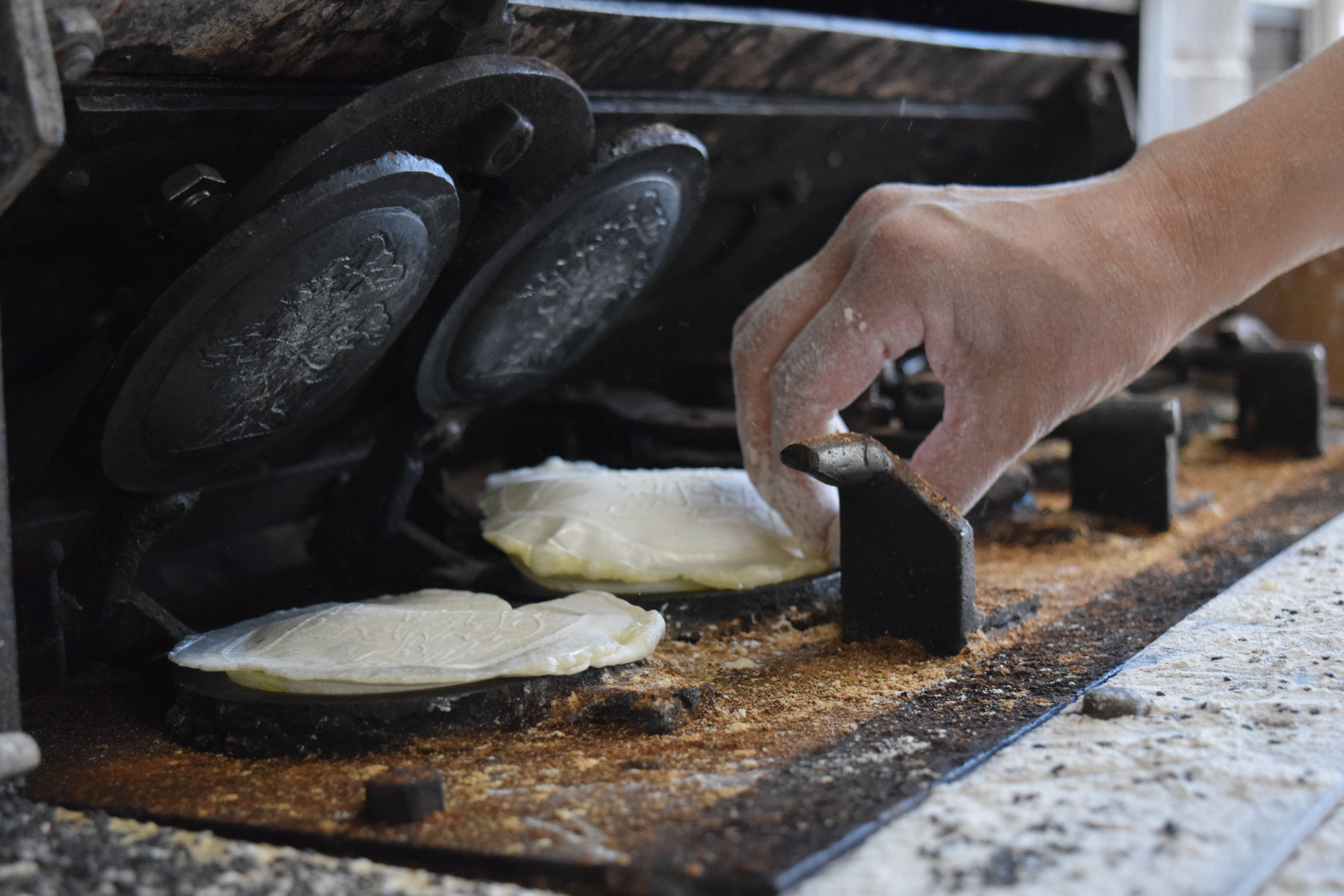
Japanese rice crackers or senbei are found in a variety of shapes and sizes all over Japan. But here in Hachinohe and the surrounding area, the Nanbu senbei style of cracker reigns king. So, what makes the Nanbu senbei cracker different from other Japanese crackers? The main difference is that they are made from wheat flour instead of rice, making them completely different in style, texture, and taste.
The crackers are actually deeply tied to the culture and history of the area as a whole, but more than being just a cultural symbol, the Nanbu senbei is also a delicious treat! One of the most common ways to try a Nanbu senbei is in a dish called Senbei-jiru or “Senbei Soup.” The dish is made by breaking up the crackers and throwing them into a piping hot bowl of chicken and vegetable soup creating a delicious and comforting meal.
Nanbu senbei crackers can be purchased at almost every supermarket, convenience store, or souvenir shop in the area. But if you are looking for the most delicious way to sample this regional treat, it is highly recommended to take the time to travel to a specialty Nanbu senbei shop. There you can sample the crackers fresh out of the cast-iron molds in which they are fire-grilled.
#5 Tour a Sake Brewery
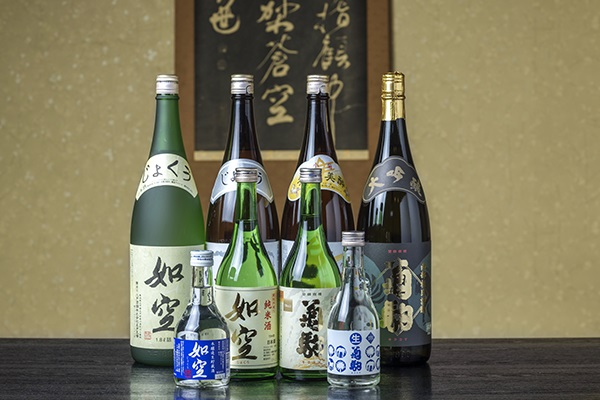
The local sake from the Hachinohe Area is some of the best in the prefecture, if not all of Japan (depending on who you ask). In the city of Hachinohe alone there are two breweries: the Hassen Sake Brewery and the Hachitsuru Sake Brewery.
The Hassen Sake Brewery is located in the port area (called Minatomachi) while the Hachitsuru Sake Brewery is located in the middle of downtown. Both breweries produce amazing sake and hold tours of their facilities with tastings at the end. Why choose between the two when you can visit both?
#6 Explore Hachinohe’s Yokocho (Drinking Alleyways)
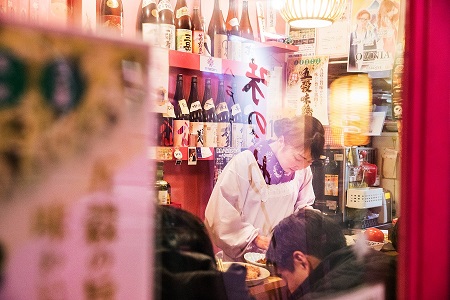
#7 Visit a Shrine
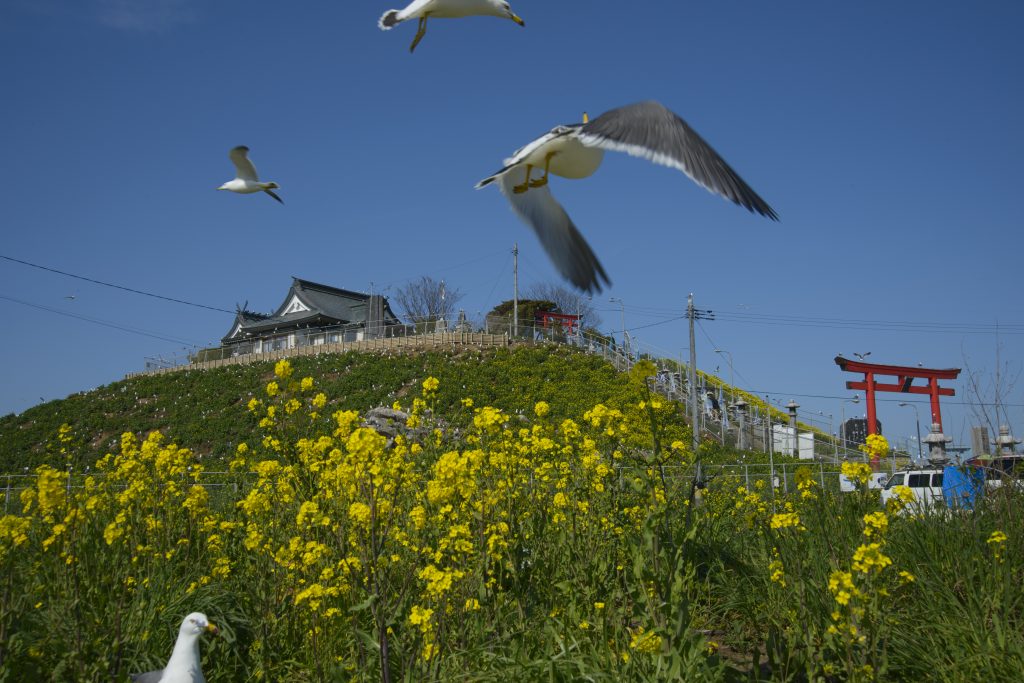
A lot of things in Hachinohe seem to come in pairs (2 main morning markets, 2 main stations, 2 sake breweries, even 2 main festivals) or sets of eight (8 yokocho, 8 cities & towns make up the Hachinohe area, 8 things on this list). The main shrines of Hachinohe fall into the former category.
One of the most prestigious shrines in the area is the Kushihiki Hachimangu. Besides having a long name, this shrine has a long and important history in the area and was once one of the patron shrines of the Nanbu clan. The shrine is home to two national treasures that are housed in a small but worthwhile museum on the shrine grounds.
The second shrine is the Kabushima Shrine. The shrine sits on top of a hill on Kabushima Island (now a peninsula thanks to a small landbridge) in the middle of the breeding grounds for the black-tailed gull. The shrine, the people of Hachinohe, and the black tailed-gulls have passed the centuries in harmony, weathering wars, tsunamis, and famines together. Unfortunately, the shrine was lost in a fire and burned down in 2015. But this did not dishearten the people of Hachinohe and it certainly did not deter the black-tailed gulls from coming back to their breeding grounds. Since the fire, the people of Hachinohe have come together to rebuild the shrine, but stop their construction every year when the birds return so that they can breed, nest, and raise their young in peace. The shrine is set to be finished in March 2020, just in time to welcome the birds back again.
#8 Explore the Greater Hachinohe Area
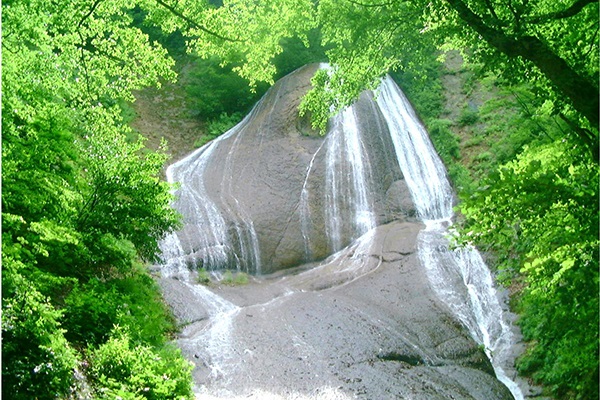
The Hachinohe Area is composed of Hachinohe city and seven other towns and villages in the surrounding area. The area includes the towns of Hashikami, Oirase, Gonohe, Nanbu, Takko, & Sannohe, and the village of Shingo. Often overlooked or passed by, many of these places have truly wonderful things to see, activities to experience, and food to eat. If you drive a little further down the road, walk a little longer down a trail, or take a bit more time to explore the unexplored, you’ll be sure to discover something truly unique in the greater Hachinohe Area.
